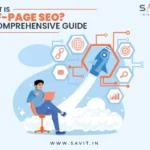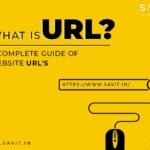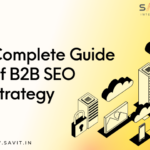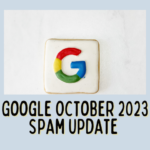The most essential thing you can do for your SEO friendly content is to optimize it for your target audience and for search engines to track them easily.
It takes time and all your efforts though, to produce content that is SEO friendly. However, if you perform things correctly, you can anticipate that they will pay off in the end.
People often believe that content that has been optimized for SEO cannot be user-friendly. This is a total myth since having well-optimized, high-quality SEO friendly content increases your possibility of appearing higher in search results.
Check out these SEO guidelines to learn how to write SEO friendly content and improve the ranking of your content in search engines.
Want to write SEO friendly content is efficient and provides results? And improve your website’s visibility on SERP.
Some major tips and tricks that you can implement and get started immediately.

Keyword Research
Keywords still matter a lot in SEO friendly content, even though some people might ignore it but it tends to pull all the right set of users to your product pages and content. You can captivate search results and please your target audience by choosing the proper keywords that is relevant to your products or services.
Consider the following points while selecting your keywords:
- Know the quantity of searches made in a specific time period by the users for a particular keyword. However, you will waste your time and money if you use the wrong keywords unknowingly.
- Recognize the search intent of the users behind the keywords, that they are searching for and use their intended keywords on your page so that it appears on their search results.
- The search results already have a long list of research sources, so take inspiration from your competitor’s content and analyze them before producing anything.
- Pay attention to long-tail keywords. Despite having a low search volume, they nonetheless have a higher chance of ranking on the search results.
- Medium and longer keywords are typically used by people looking for more detailed information regarding their search query.

Here are some wonderful resources to help you conduct effective keyword research for your SEO friendly content:
- To locate the best keywords, use tools like the AnswerThePublic, or Google Keyword Planner.
- Use Quora to come up with fresh versions of your goal keywords. People use this tool to talk about business-related subjects that aren’t search-filtered.
- To find out more about consumers and what they are looking for, use Google’s Related Searches feature in your SEO friendly content.
- Based on real user questions, Google Autocomplete will offer keyword suggestions. Through the way, SE Ranking also has a feature called “keyword recommendations” that aids in choosing keywords based on how searches really conduct their searches.
- Use Wikipedia to look for subject-specific pages. People usually rely on, use, and refer to the human-made internet resource as it appears highly in SERP.
- Visit various industry forums to determine the queries and subjects that attract your clients.
- Keep tabs on your primary rivals to see which keywords are bringing them a good amount of reliable traffic.
- Browse for keyword suggestions and see which one controls the organic search results.

Once you’ve located the desired keywords, be sure to use them appropriately in the below format:
- Title
- URL
- Keep your meta description to between 150 and 160 characters.
- Use H1 to H6 tags for keywords in your article.
- Make use of image slugs and alternative image tags.
Keep in mind that utilizing too many keywords will make your material harder to read. Don’t do this to prevent confusing your readers. Additionally, avoid overloading your content with keywords.
Write blog entries and other sorts of material that provide solutions to issues or address queries from your audience while simply including your keywords into your SEO friendly content.

Have Organized Content
Adhere to a strong framework if you want to produce excellent SEO friendly content.
Determine the main point of your post first. You can write more quickly and easily by breaking it up into smaller sections. When your SEO friendly content is organized, you can work on each section independently without needing to take a moment to reorganize your ideas.
There should be an introduction, a main body, and a conclusion for each piece of your SEO friendly content. You can break up the body into various sections and compose content that both reflects your personality and connects with your readers.
Making the most of your conclusion is something that folks and could overlook. Strong calls to action at the end of your writing should encourage readers to take the intended action.

Create brilliant titles
The impact of titles on SEO friendly content is significant.
Punchy and evocative headlines can assist visitors understand the topic of your blog post and the benefits of reading it.
Follow these straightforward guidelines to optimize your titles for SEO friendly content in order to improve your chances of ranking higher:
- Your title should begin with your chosen keyword.
- Titles should begin with your chosen keyword.
- Titles should not exceed 60 characters because, in the search results, Google only displays the first 60 characters.
- Make sure you properly summarize your SEO friendly content
You can utilize affective variables in your titles, such as “top,” “great,” “interesting,” “free,” “how to,” “surprising,” and so on, to pique the interest of your readers and boost your CTR.

Headlines and subtitles
They’re essential for SEO because they make it possible for web crawlers to easily identify the purpose of your SEO friendly content. By directing consumers to your website, this makes it easy for them to find what they’re looking for.
Your content will be easier to read if you provide engaging subtitles. It’s necessary to implement hierarchical mode while using subtitles.
H1 – H1 tag should be used for the title of a blog post and it should contain the target keyword.
H2 – H2 tags serve as content sections that use related keywords to those in the H1 tag.
H3 – Subcategories, which further segment the content and make it more scannable.
It is logical to formulate new heading tags. familiar tags can give the impression that you are delivering the same content over and over again to your users and also it can confuse the search engines.

URL for SEO
One of the most vital SEO friendly components is carefully constructed URLs. URLs are major ranking factor, they are simpler to share and offer a better user experience.
Use the following principles to create URLs that are search engine friendly:
- Each page’s targeted keyword should be included. When you include specific keywords then it will automatically increase your website’s search results and will boost your website pages with better categorization and identification by search engines.
- Limit the use of lengthy and complicated URLs by eliminating unnecessary and extra words. The typical URL should be of minimum words or max 60 characters long.
- Words should be separated by hyphens. For instance, Link:
- Type in lowercase because on some systems, uppercase letters can cause redirects or 404 problems.
- Stay away from stop words like a, an, but, and or.
- Shorten the URLs you use as it will make it easier to share your SEO friendly content.
Minimum paragraphs
Try to keep your paragraphs minimum as it is one of most important part of your content pages and use simple fonts to make them more readable for the users.
The paragraphs should be logically organized and have their own ideas, but this does not necessarily mean that each sentence needs to begin on a new line.
Avoid lengthy paragraphs and write briefly with 2-3 lines only.
Any more than that will make your content seem cluttered and your users will find it harder to read. So, make your user content more SEO friendly content.
Make use of different formatting techniques, such as the ability to add bullet points, highlight text, and alter the font. This simplifies reading for mobile users to easily scan through the text, which also makes it more interesting.
Optimize meta description
Meta description, which Google utilizes to display beneath you title in the search results, provides a synopsis of your SEO friendly content. To get visitors to click on your blog post, it’s important to make it interesting and useful.
Your target keywords should be included in the meta description, which should also describe the topic of your post. The meta description can be 155-160 characters long.
- Use terms that are action-oriented as they receive more clicks.
- Do not mislead users with false content
- Always provide some sort of solution or advantage to your users.
The original meta description you worked over is not a surety that it will show up in the search results.
Thus, the most effective approach is to choose your target keyword and naturally incorporate it into your meta description. Google will most likely use your tag if they discover a match in your meta description.

Optimizing Images
You may successfully communicate your points and enhance the reading experience by including and optimizing images in your blog’s content. To transform them from simple content to an enhanced version of SEO friendly content.
Although Google Images can’t decipher text embedded in images, it can evaluate the image’s content to determine how relevant they are to a given search query. You must provide appropriate Alt text as well as illustrative filenames, headings, and captions.
Search engines use the ALT text, which is invisible to website visitors, to better understand the subject matter of a picture. People will instead see ALT messages if photos aren’t able to load on a certain device.
In your ALT text, make sure to include your main keywords in a organic and suitable manner while still creating helpful and informative post, this will make it more SEO friendly content.
Add Internal and External Links
Include any phrases, data, or topics that need more explanation whenever you produce a new blog article. This means that you should continue to include both internal and external links in your SEO friendly content. They assist your readers in digger deeper into a subject while maintaining attention on the key idea.
Internal linking is a powerful tool for increasing reader engagement, lowering bounce rates, and assisting search engines in determining the importance of your SEO friendly content. Building trust and enhancing user experience are two benefits of linking to relevant external sites like Wikipedia.
Another thing you can do is by including descriptive anchor text in the links, so that users can know and understand what the link is all about. Try to use only few links because more than that can lead to confusion. Nobody is aware of the ideal number of links to use so make sure your links are relevant, appropriate, and helpful to readers.

Have perfect content length
Too many words may bore the users and will indicate your inability to distinguish between important concepts from unimportant ones. So, the recommended word count for a normal blog post is between 300 and 500 words.
This is so that it would receive more likes and mentions on social media, which Google prefers longer material for. As a result, longer posts have a good possibility of doing better in searches.
Around 2000 words is the ideal word count for any SEO friendly content. The most important thing is to give your readers the content that best suits their needs and fulfils their search intentions.
Always examine the blog’s that are receiving the most views from your top- ranking SEO friendly content, to determine the effect of content length. Make sure to keep working on your quality content that you want to deliver it to your users.
Mobile Friendly Content
Currently, most people worldwide use either mobile phones or a tablet on a frequent basis. As Google now gives mobile-friendly websites a higher rating, optimizing your blog for mobile devices is a necessity for search engines.
As a result, it is crucial to have a responsive website design because Google forbids sites that are not mobile-friendly.
Secondly, you should adjust your web design for desktop, tablet, and mobile platforms. Users can access important information more quickly because of the layouts and navigation’s simplicity. So keep in mind to check and evaluate how quickly your website loads.
To create SEO friendly content that loads quickly and enhance the user experience overall, use mobile friendly pages.

Analyze and Update
Even if you produce material that is interesting and very effective, you still need to update your website frequently with new blog entries.
Google does this in order to give users that best results possible for their search terms. As a result, if you don’t often post, Google won’t think highly of your blog as a search engine resource.
A good place to start is once or twice a week. As you reply to comments on your post, give your visitors some time to absorb your recent information.
To write better, use these copywriting tips:
- Avoid passive voice in your SEO friendly content
- Keep it simple and easily understandable
- Before writing ask yourself, what problem does this copy solves
- Add value and advantages for your users in your SEO friendly content
- Be honest and create engaging content
- Lastly, don’t forget to use short sentences for quick readability
Active Social Share
Customers can share their online purchases on social media networks like Facebook, Twitter, Pinterest, and others by using social share buttons.
These buttons offer free advertising for an online store because the majority of online buyers utilize social media in some capacity.
Do you desire free links? Make it simpler for consumers to locate your social share buttons so they can promote your work online.
People will be more likely to click and share your publications if the buttons are well created.

Schema Markup
What does Schema Markup mean? Schema markup lets the search engine know exactly what your SEO friendly content on a web page is attempting to say. Data that is unstructured is transformed into structured data.
As long as other best SEO practices are followed, adding schema will improve search engine crawling and improving the website’s ranking.
Utilizing schema markup will also improve how search engines interpret your SEO friendly content. It separates your entire site into sections and explains to search engines what each section means.
The Structured Data Markup Helper provided by Google makes it simple to add markup on your web page, so that Google can understand the data on your page.

Additional tools that will definitely help you in writing SEO friendly content
SEO analysis tools are essential if you want to write blogs that are both understandable and SEO friendly content.
You can evaluate your mobile optimization, generate and publish a sitemap, analyse your profile, locate and remove poor links, and more with the use of robust SEO tools.
Before publishing your writing online, proofread it. Verify that it is error-free with regard to language, spelling, and punctuation. Use Grammarly to check your text’s readability.
Honestly, it will take some practice for you to create SEO friendly content for your webpage, but remember it will be so worth it when you will see your website automatically ranking higher that your competitors.








































